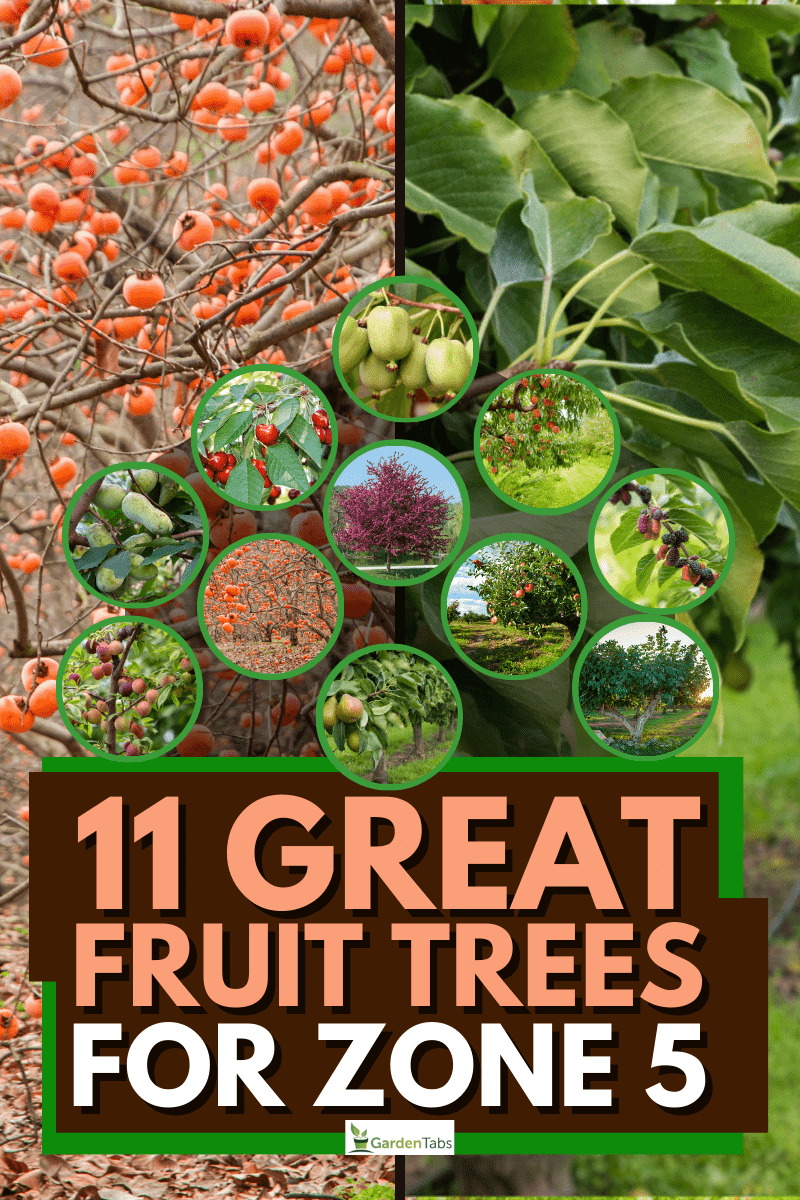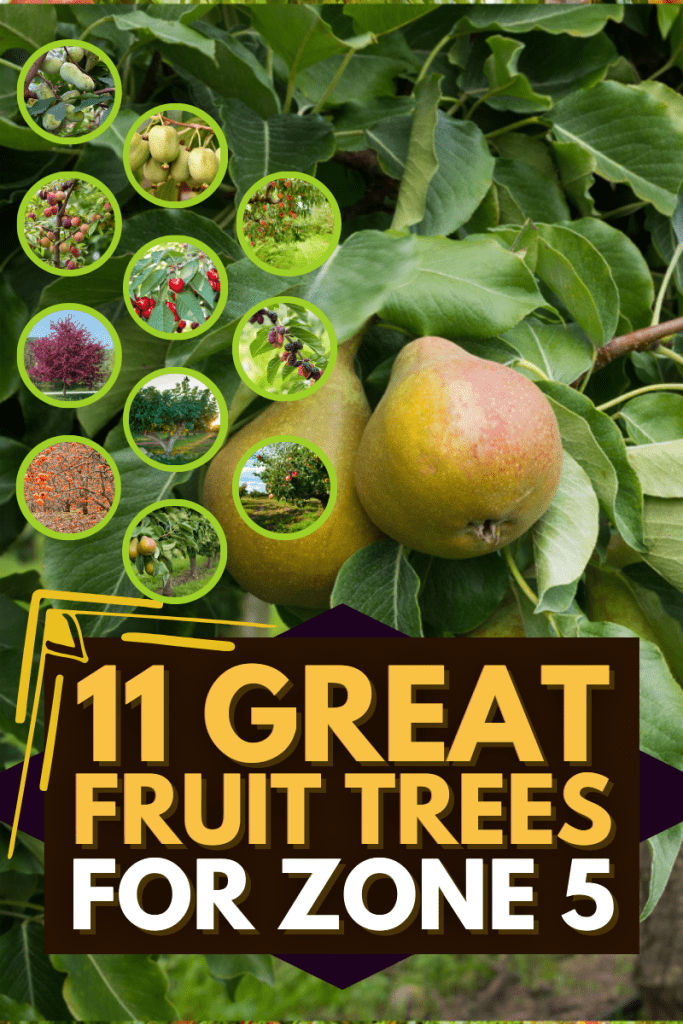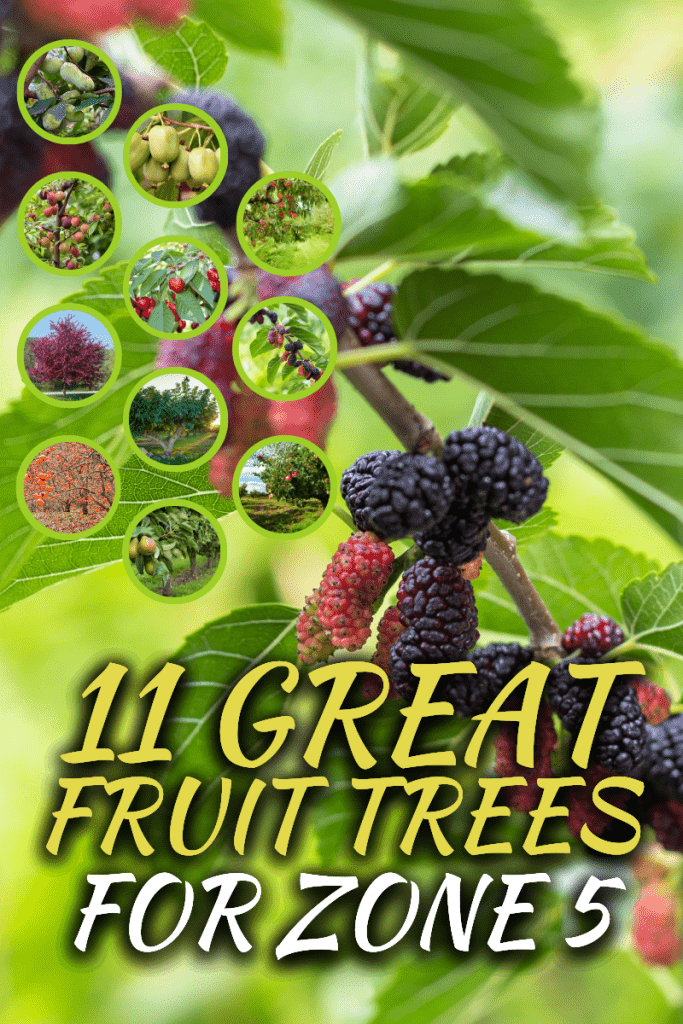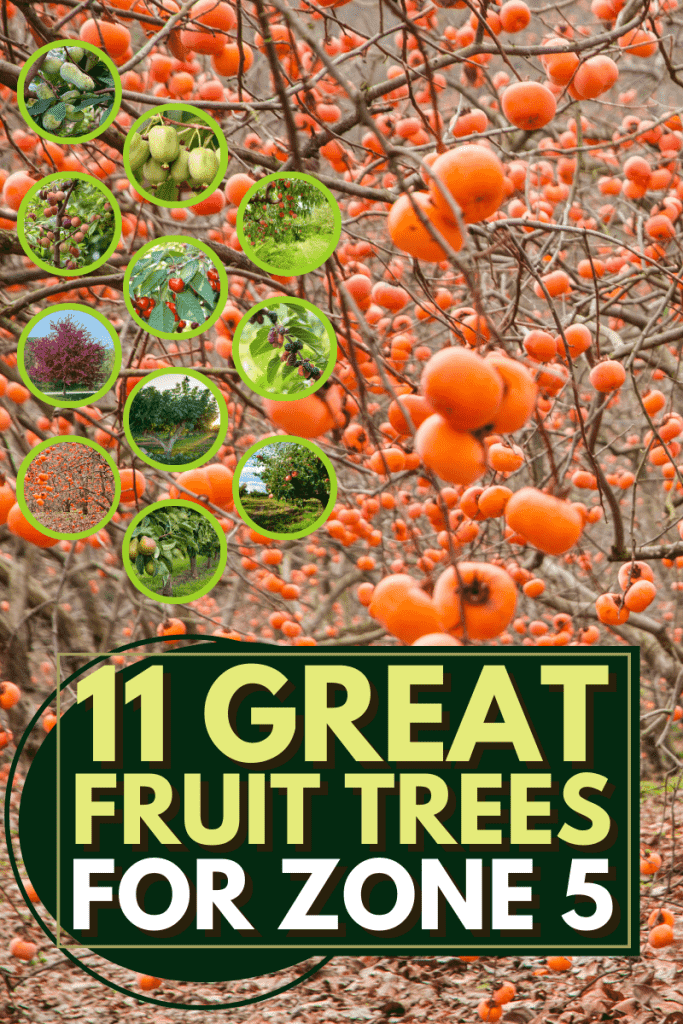Growing your food is both rewarding and delicious! If you don't live in a warm climate, you might think it's impossible to grow a fruit tree in your yard. However, that is not the case! Several varieties of fruit trees will thrive in cooler climates. We have done the research and can offer you a list of great fruit trees that perform well in Zone 5.
Here are 11 great fruit trees that can be grown in planting zone 5:
- Apple
- Cherry
- Peach
- Pear
- Crabapple
- Fig
- Plum
- Mulberry
- Paw Paw
- Persimmon
- Cold Hardy Kiwi
Zone 5 climates tend to have chillier winters, and the trees listed above will happily grow in this type of climate. Not all fruit trees are created equal, so choose one that will work in your climate and growing conditions. Continue reading to learn more about these varieties of trees, how to care for them, and more!

Zone 5 Fruit Trees

Before we talk about the fruit trees mentioned above, click here to determine the planting zone in which you reside. If you live in zone 5, this list is perfect for you.
Make sure you plant your trees in areas with at least 8 hours of sun per day. Fruit trees will not perform well without the sun. Additionally, consider the size of the tree before you plant. Be sure you have adequate space for your trees to mature.
1. Apple

Apple trees are one of the hardiest and most dependable fruit trees to grow. The most challenging part of growing an apple tree might be deciding which variety to choose. There are hundreds of varieties to choose from. Golden Delicious, Honeycrisp, and Granny Smith are among some of the most popular choices.
Apple trees are perfect in any space. You can plant multiple trees if you have a large space; these trees can even be planted in a large pot if your space is limited. Apple trees need little to no pruning, can be grown in most types of soil, and are low maintenance.
Do know, however, that insects and mold can plague your apple tree if you're not careful. You may need to spray your tree for insects such as aphids and Japanese Beetles.
This Honeycrisp apple tree can be found on Amazon.
2. Cherry

You can grow cherry trees even if you live in Zone 5. In early spring, stunning white blossoms will cover your tree, and by midsummer, your tree will be full of delicious deep garnet cherries. The bing cherry tree is a popular variety among cherry tree lovers.
Of all the fruit trees on our list, the cherry tree is one of the trees that produce the most fruit. These delectable fruits can be used in jams, pies, wines, or enjoyed by themselves.
Be careful that you don't overwater your cherry trees and watch out for birds. They like to eat these delicious treats as much as we do! Consider putting netting over your trees to prevent the birds from devouring your crop before you have time to pick them.
3. Peach

A sweet peach's juicy, unique flavor is sure to tantalize any tastebuds. Peach trees will thrive in zone 5, but ensure you get a cold-hardy variety such as Reliance or Contender.
Peach trees grow relatively quickly and can produce fruit in as little as 1 to 2 years after planting. These trees are self-pollinators, meaning you can only plant one and have successful results. Plant them in full sun and well-drained soil. You will need to prune your peach tree every year, or production will stop.
4. Pear

If you're new to growing fruit trees, the pear tree might be an excellent choice for your first tree. Remember, depending on what type of pear tree you buy; they can grow as tall as 30 feet. Think about a dwarf or semi-dwarf variety if your space is limited.
Pear trees are cold-hardy, do well in climates with high heat and humidity, and are drought tolerant. The more sun, the better for these trees! Don't overwater your pear tree; watch for pesky pests such as aphids.
Pruning your pear tree is essential and needs to be done correctly to ensure your tree produces regularly. Be patient. A pear tree can take 3 to 5 before it begins producing fruit.
Click here to find this pear tree on Amazon.
5. Crabapple

Mostly known for their glorious white or pink blossoms, crabapple trees can be a welcome addition to your yard. These small trees will only grow to be 10-15 feet tall and are an excellent choice for small areas.
While edible, these apples are much sourer and tart than regular apples. They can be eaten raw but are best used to make juice or jam. Check out this post, "5 Best Crabapple Trees For Fruit."
Plant them in full sun for the best results, and enjoy these beautiful trees year round. Whether you like the fruit or not, you won't be disappointed in the changing colors of these trees.
For more care on crabapple trees, click "7 Best Fertilizers For Crabapple Trees."
6. Fig

The fig tree might be an underrated tree that often gets forgotten. Fig trees require very little care and are easy to maintain. They can be sensitive to the cold, so one idea is to grow them in a pot and bring them indoors over the winter. Believe it or not, they can grow indoors!
Fig trees are resistant to animals such as deer, rabbits, and squirrels. The only things you need to worry about when caring for your fig tree are the cold and drought. Don't let your fig tree get too dry, especially if it is kept in a pot. It can easily dry out if not watered regularly.
These sweet, meaty fruits are deliciously eaten alone or can be dried, canned, or made into jam.
7. Plum

Plum trees are a great option if you're looking for a fruit tree to grow in zone 5. Several varieties are highly cold-hardy and can handle the sometimes harsh winters of zone 5. They are ideal for smaller spaces as they get 8 to 10 feet tall and 6 to 8 feet wide.
Plums require full sun and don't do well when they get too wet. Critters like deer, chipmunks, and rabbits love to dine on plums, so be careful. You may have to find a way to keep these animals from devouring your plum tree.
8. Mulberry

If you want a touch of something a little more exotic, try a mulberry tree. Mulberry trees are relatively easy to grow and often don't become infested with pests or diseases. Mulberries can be eaten alone or used in tea, cooking, or dietary supplements.
Once mulberry trees are planted, it can take up to 10 years before they begin producing fruit. If you're looking for a tree that produces fruit quickly, this may not be your ideal choice.
Plant mulberry trees in full sun or partial shade. Mulberry trees tolerate most types of soil but ensure it is well-drained.
9. Paw Paw

These trees look like they belong in the jungle but are suitable for zone 5 planting. Paw paw tree fruit has a custard-like texture when cut open and resembles tropical flavors. What a fun addition to your yard.
These tricky trees can be challenging to grow, and you may need to hand pollinate them. This unique tree does well in both the shade and the sun. Its enticing fragrance and fruit will add an exotic touch to your landscape.
10. Persimmon

Similar to apricots, the persimmon tree was essential to early explorers and Native Americans. Both the fruit and wood are valuable on this type of tree. Persimmons trees aren't picky and do best in full sun with well-drained soil. There isn't much to caring for this tree except watering. Very little pruning is required, and they are relatively easy to grow.
11. Cold Hardy Kiwi

Unlike regular kiwis you find at the store, this kiwi doesn't have the fuzzy skin you're accustomed to seeing. They are more of a berry and have a sweeter taste with no peeling necessary.
These are more of a vine-like tree and require some support, such as a trellis or fence. You will also need both a male and female tree for the trees to pollinate. They can be planted in full sun or partial shade. Don't overwater them as they can develop root rot.
Final Thoughts
As you can see, if you live in planting zone 5 and are interested in planting fruit trees, there are many available options. You can incorporate traditional apple and peach trees or more exotic ones like paw paw or hardy kiwi. Add any of these to your property for your homegrown, delicious fruit.







